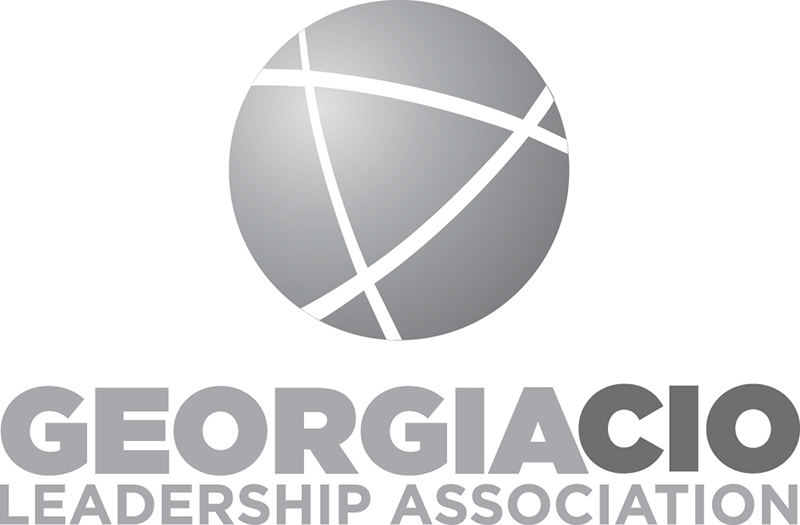(This interview is part of a series highlighting the winners of the Georgia CIO Leadership Association CIO of the Year Awards. Read the intro to this series here.)
 When Jean Holley took home the Global CIO of the Year award from the Georgia CIO Leadership Association, she was quick to give credit and thanks to her team. She has said that building a team that is diverse, credible, and high performing is among her greatest accomplishments as a CIO.
When Jean Holley took home the Global CIO of the Year award from the Georgia CIO Leadership Association, she was quick to give credit and thanks to her team. She has said that building a team that is diverse, credible, and high performing is among her greatest accomplishments as a CIO.
We caught up with Holley to learn more about her dream team as well as her simple – yet effective – leadership philosophy.

The Enterprisers Project (TEP): What would you say are the attributes of a strong leadership team in IT?
 Holley: You really have to have one integrated vision. It shouldn’t be a series of visions. It should be one strategy that you can translate into strategic programs. Then you have to lay out an organization that can help implement that vision. For us, that’s a mix of people who are on our payroll, as well as the many companies and colleagues outside of our organization that contribute to our vision. Then, it’s really operating against that plan, measuring your results, and celebrating wins.
Holley: You really have to have one integrated vision. It shouldn’t be a series of visions. It should be one strategy that you can translate into strategic programs. Then you have to lay out an organization that can help implement that vision. For us, that’s a mix of people who are on our payroll, as well as the many companies and colleagues outside of our organization that contribute to our vision. Then, it’s really operating against that plan, measuring your results, and celebrating wins.
It sounds simple, but it can be difficult to do. I’ve seen many IT strategies that are intergalactic. They’re too complex. No one gets it, and they can’t remember it. Boiling it down to the simple things is challenging, but remarkably more effective.
TEP: Are there things that you’re doing to keep the vision top of mind with everyone on your team?
Holley: We actually have a “strategy on a page.” It’s continuously developing as some of the words may change on a year-over-year basis. But the framework of it – the mechanics of it – stay the same. It’s a visual PowerPoint on a single slide, and people get it. They can really feel and visualize how that strategy has been implemented over time, and we ensure that all IT projects align to that strategy.
TEP: Lack of diversity is a real challenge for many IT organizations – what went into building such a diverse team?
Holley: First of all, we define diversity very broadly. It’s not just gender. We define diversity in terms of experience, age, educational background, geography, and all other aspects of diversity. When you do that, the next step is looking in the mirror, understanding what your organization looks like, and what you want it to look like. We’re a global company, so it’s very important that we have global diversity – specifically, people speaking different languages who understand cultures from all over the world. For us, that meant we couldn't fish in the same pond based on where we are headquartered in Atlanta, GA. If we hired all of our leadership locally, I doubt we'd get South African experience, as an example.
For diversity, you have to fish from different ponds. A few ways we ended up achieving our wide definition of diversity: we promoted from within, we hired from the outside, we brought talent in from our business units, and we also exported talent to other business units. Never did we put quotas in front of that, saying, “We need six of these, or two of these, or five of those.” We were simply mindful of what we were looking for. And now it just happens naturally, and that’s a beautiful thing.
TEP: Can you talk about the importance of credibility in IT – and what it took to turn around the perception of an IT org that in your words was “not credible” into one that was delivering value to the business?
Holley: First of all, IT is a business function. IT is a business, but with certain expertise, and I think you can look at the health of your IT organization by how good your relationships with your business units are. If your business units are buying systems and doing things without you, you need to look in the mirror, because you’re probably a good part of the reason why.
When I came on board, IT didn’t have great relationships with the business. We were order takers. We were reacting to what our different businesses needed. In order to transform, IT had to be much more understanding and bring in expertise from our business areas so that we could help suggest, shape, and form their strategies.
As an example, we have a lot of supply chain expertise in our company. That’s what we are – a supply chain and logistics company. But yet, if you looked at the leadership in IT, we were missing that expertise. So together, with the heads of our supply chain, we worked on a job description for a senior position. We hired together, and our business units had the ability to say, “This is the right person,” or, “This is the wrong person.” Then, with the right expertise in place, we built a supply chain IT strategy together.
You have to develop a close relationship where your business trusts you, and you trust them. After that, you can deliver your projects and your end results. It’s imperative.
TEP: Can you describe your leadership philosophy as a CIO?
Holley: My leadership philosophy can be summed up in five simple words: Explore, Learn, Include, Grow, and Balance. They are simple, but very powerful. First, I believe you need to constantly explore and learn. Not just when you have a need, but always. Antennas up, radar on.
If you don’t, you’ll miss something. When you’re out there exploring, you need to ask questions and figure out what works and doesn’t work. Sometimes, the “how not to” is just as important as the “how to,” because no one sets out to fail. So exploring and learning go hand in hand.
The word “include” means including a wide range of people internal to IT, internal to our business unit, and externally. When I go to the GCLA, I think, “What an interesting cross-section of professionals to include when we’re exploring and learning.” It’s thinking way beyond your organization. The next piece is to grow. There are a lot of people who can network, they can talk to people, but do they grow from their learnings? Sometimes, it’s as simple as reflecting, “Who have I met? What did I learn from that?”
The last piece is balance, because all work and no play is just as bad as all play and no work. How you balance the two is key. Together, these five words have served me well over the last 30 years, and I think they will for the next 30.
TEP: What do you like best about being a part of the Georgia CIO Leadership Association?
Holley: That’s easy. It’s the people. It’s just a wonderful group of people that you can explore, learn, include, grow, and balance with. It really is.
TEP: Where can or should CIOs go to stay current on what's important in the world of IT? Where do you turn?
Holley: The way I stay on top of things in IT is by networking. I talk to lots of people, and I cast my net really wide. I will go into some most unusual industries or directions to go exploring, and it’s always amazing to me what you can learn from other people. For example, I love startups, and in fact, I love exploring a large number of startups. That’s where you see early trends and new things emerging. Also, a lot of startups don’t make it. So trying to learn why and what happened – did they miss the mark? Were they not funded? Did they go too wide? There are so many things you can learn.






